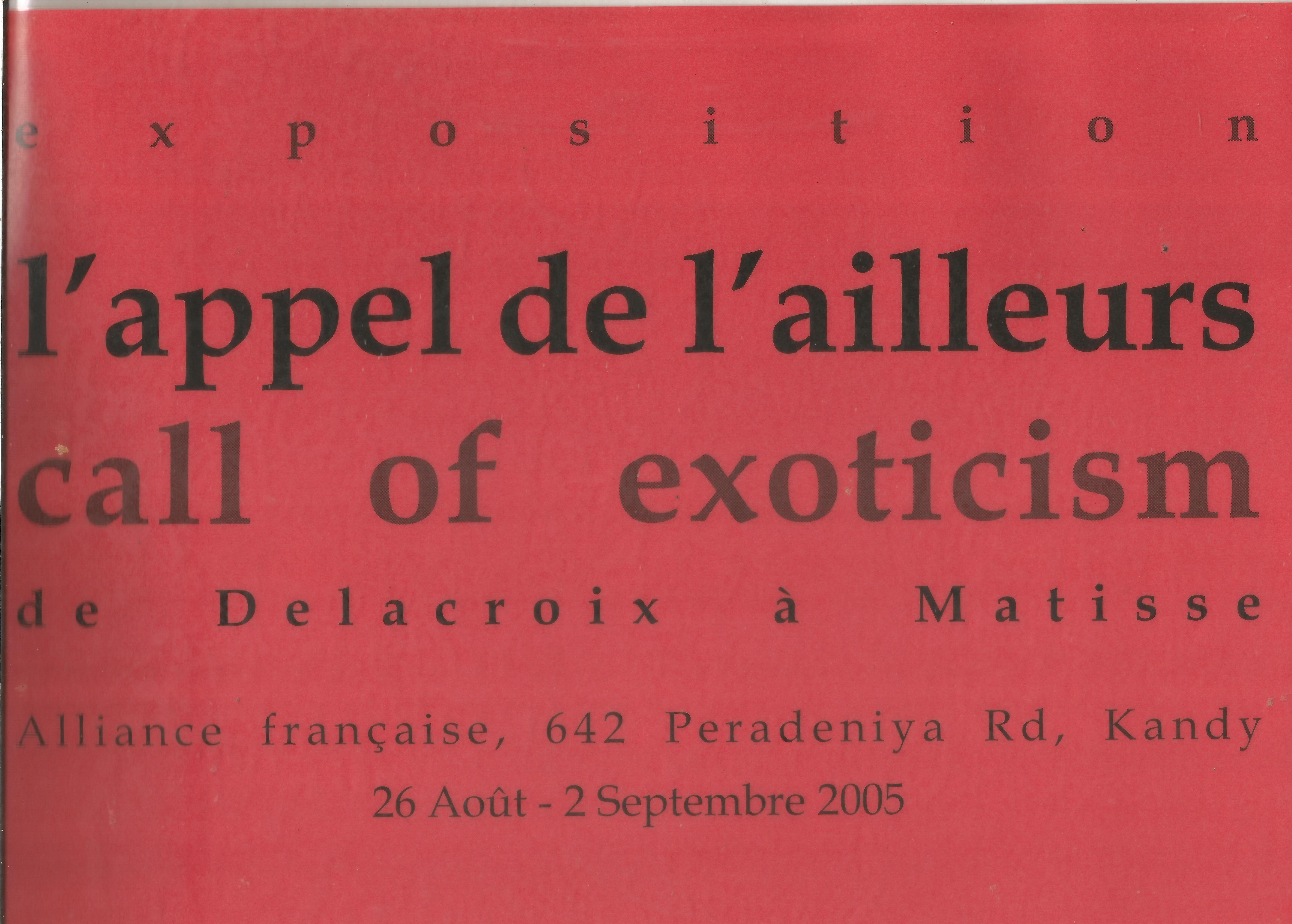« L’orient des peintres »- Musée Marmottan Monet – Paris
du 7 mars au 21 juillet 2019
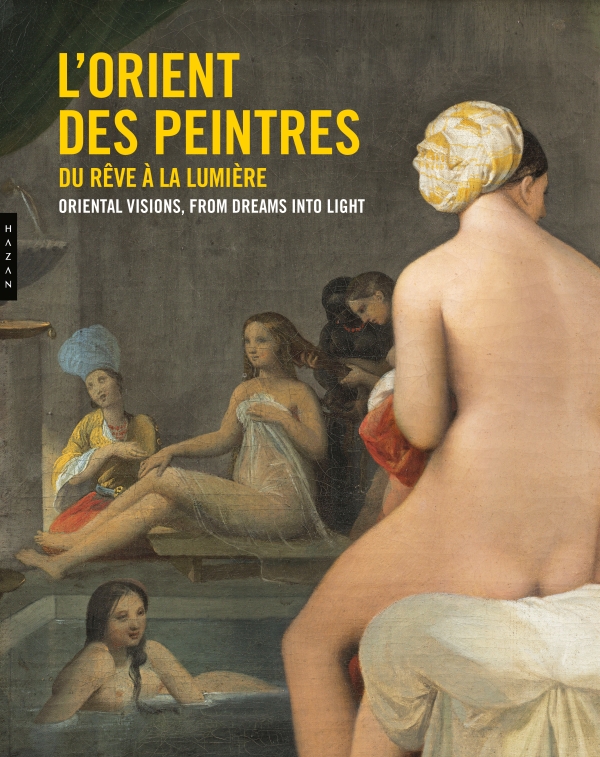
Me revient en mémoire…
L’appel de l’ailleurs
From the East of fantasy to that true East, encountered and imbibed…
Sailing on the clouds, out there, those floating clouds, those wondrous clouds…
Following the footsteps of Delacroix, intoxicated by sun kissed Morocco,
after having wept over the tragic fate of slaughtered Greeks…
To have a sweet vision of going out there to live together…
To dream with Monet of his Lady of Japan…
Like Van Gogh, set aflame with fever by the riot of the colours of the East…Transforming his canvas in pure sunshine, as did Gauguin, under the skies of the Pacific…
This is the Call of Exoticism !
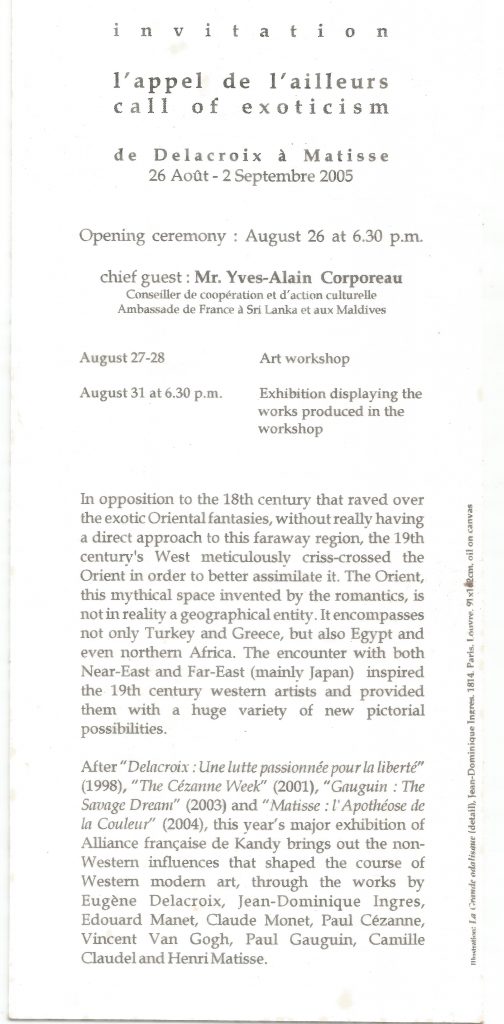
Following the footsteps of DELACROIX, intoxicated by sun-kissed Morocco, after having wept over the tragic fate of slaughtered Greeks…

« … Nous n’aimons pas les allégories ; mais celle-là est d’un profond intérêt. Cette femme, qui est la Grèce, est si belle d’attitude et d’expression. Cet Egyptien qui triomphe, cette tête coupée, ces pierres teintées de sang, tout cet ensemble a quelque chose de si pathétique ! Et puis il y a tant de science et d’art dans les hardiesses de M. Delacroix ! Son pinceau est si large, si fier et surtout si vrai. » (Victor Hugo)
We usually condemn allegories; but this particular one is of a vital importance. This woman, who is Greece itself, is noble by her expression and attitude. This triumphant Egyptian that decapitated head, those blood-stained stones… this whole setting has something so pathetic! Besides, there is science and art in the boldness of Mr. Delacroix! His brush is so large, so proud and above all so real.” (Victor Hugo)
Eugène Delacroix (1798-1863)’s Orient was Morocco. The astonishment he received in 1832 while discovering the dazzling sunlight in Northern Africa is translated in his drawings as intense use of colours and new blends of light and shade which prefigure the ‘pre-Impressionism’. Delacroix was literally shocked by the Orient. With Morocco’s sun-drenched scenery, he captured the expressive and symbolical potential of light which is now liberated from its sole function of imitation.
To dream with MONET of his Lady of Japan…
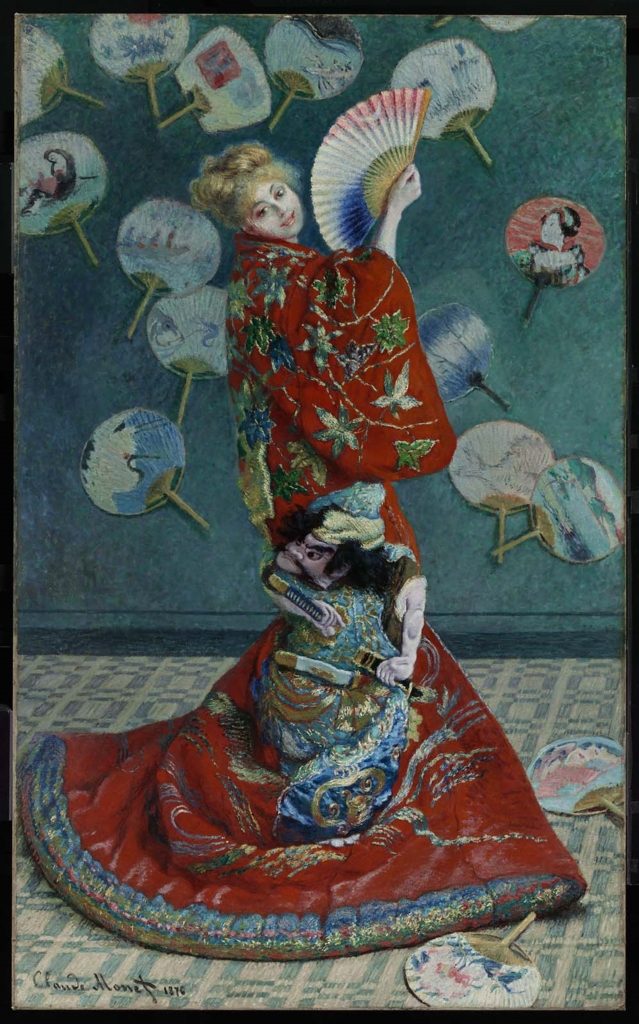
Monet n’a pas résisté à la tentation de peindre sa femme, dans un kimono au rouge vif, un éventail déployé près du visage, à la manière des beautés d’Utamaro.
Monet could not resist the temptation of painting his wife in a kimono, with a fan in her hand, and a face similar to those drawn by Utamaro. The surrounding evokes also a Japanese interior: floor covered by a tatami-like mat and the wall with bamboo fans and printed paper containing Japanese motifs.
Like VAN GOGH, set aflame with fever by the riot of the colours of the East…
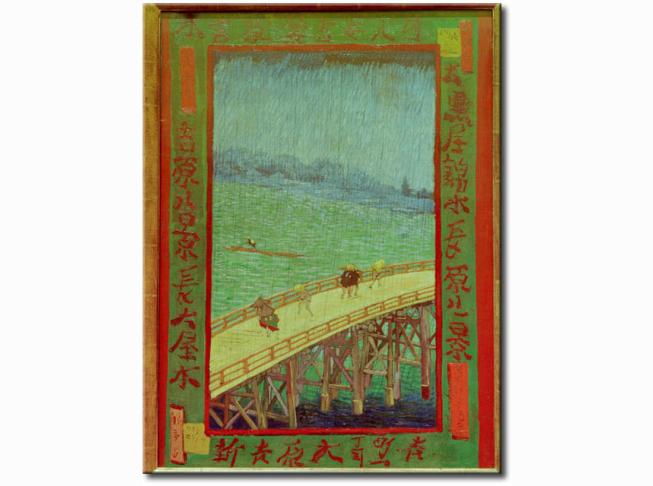
During his stay in Arles, Van Gogh wrote to his sister : « Theo wrote that he offered you Japanese woodblock prints. That is certainly the best way to understand which direction the light and colourful painting has taken. Here I need no Japanese woodblock prints, because I am here in Japan. This is why I only have to open my eyes and paint the impressions that I receive.”
Speech by M. Yves-Alain Corporeau, Conseiller de Coopération et d’Action Culturelle, at the Opening Ceremony on the 26th of August 2005 (Kandy Alliance Bulletin, 14, oct.-dec. 2005).
All life begins with a separation, because one day, our body was separated from our mother’s, where life came into being. Also, it is at this moment, the dream of a body that was lost for us for ever, becomes « somewhere else », something out of reach, untouchable.
The Romantics who dreamt of finding again the mother Nature, from whom they felt separated for ever, knew this well.
Since we have lost the original body of our mother, we, the eternally exiled, are in search of this « elsewhere », which eludes us always.
The theme of « exoticism » appears therefore among the romantic writers. Chateaubriand, for an example, saw himself as naturally exiled before becoming one in reality at the time of the French Revolution, which banished him from his country.
Also, it is at this same moment that « exoticism » takes two sides : the ordinary or the general side is of the nature to which the Romantics desired to adhere, and the other side is the more specific « Orient ».
This theme of Orient appears at first among the writers after the translation of the « Arabian nights », in the course if the 18th Century.
So, for Nerval or for Chateaubriand, the Orient was Jerusalem of the Holy Land of the Christians, and we start to talk about « orientalism ». Biblical, Arab or Muslim expressions then became, for the Europeans, this dream of « somewhere else ».
The images become directly inspired from the countries of shadows and light :
light of the sun drenched sceneries that we find with Delacroix, and that we continue to find among French painters until Matisse.
But also, the shadows of interiors, whether palaces or houses, these mysterious and intimate places were always inhabited by women wearing fabrics and jewellery on whom the maddest dreams of paintings and literature will focus (Baudelaire).
This exhibition invites us to follow this journey towards exoticism which is a part of ourselves. And I, European among you in this island of Sri Lanka, , in the Indian Ocean, I am perhaps in search of « my elsewhere ».
(Translation : Jayalakshmi Madapatha)

